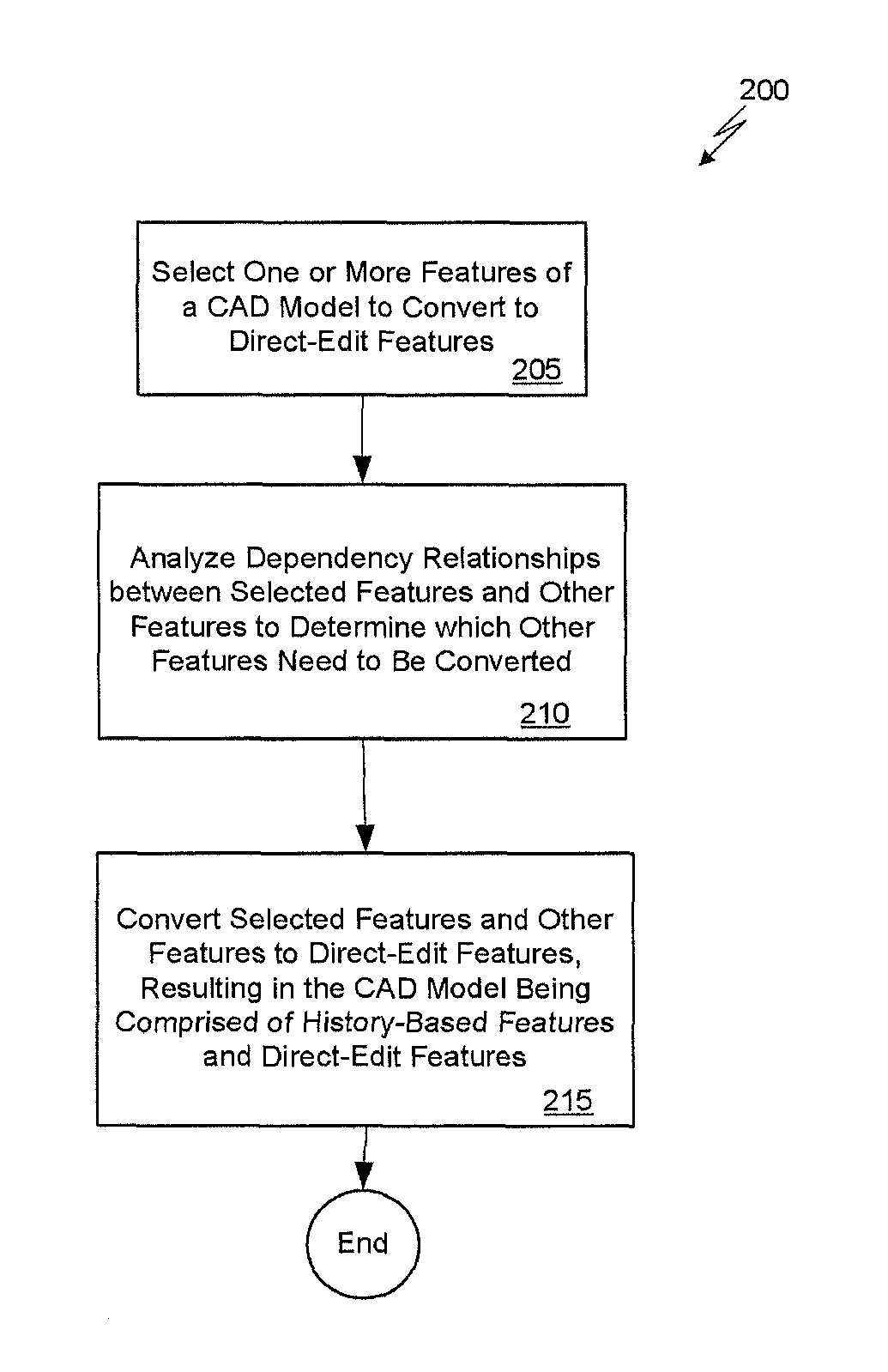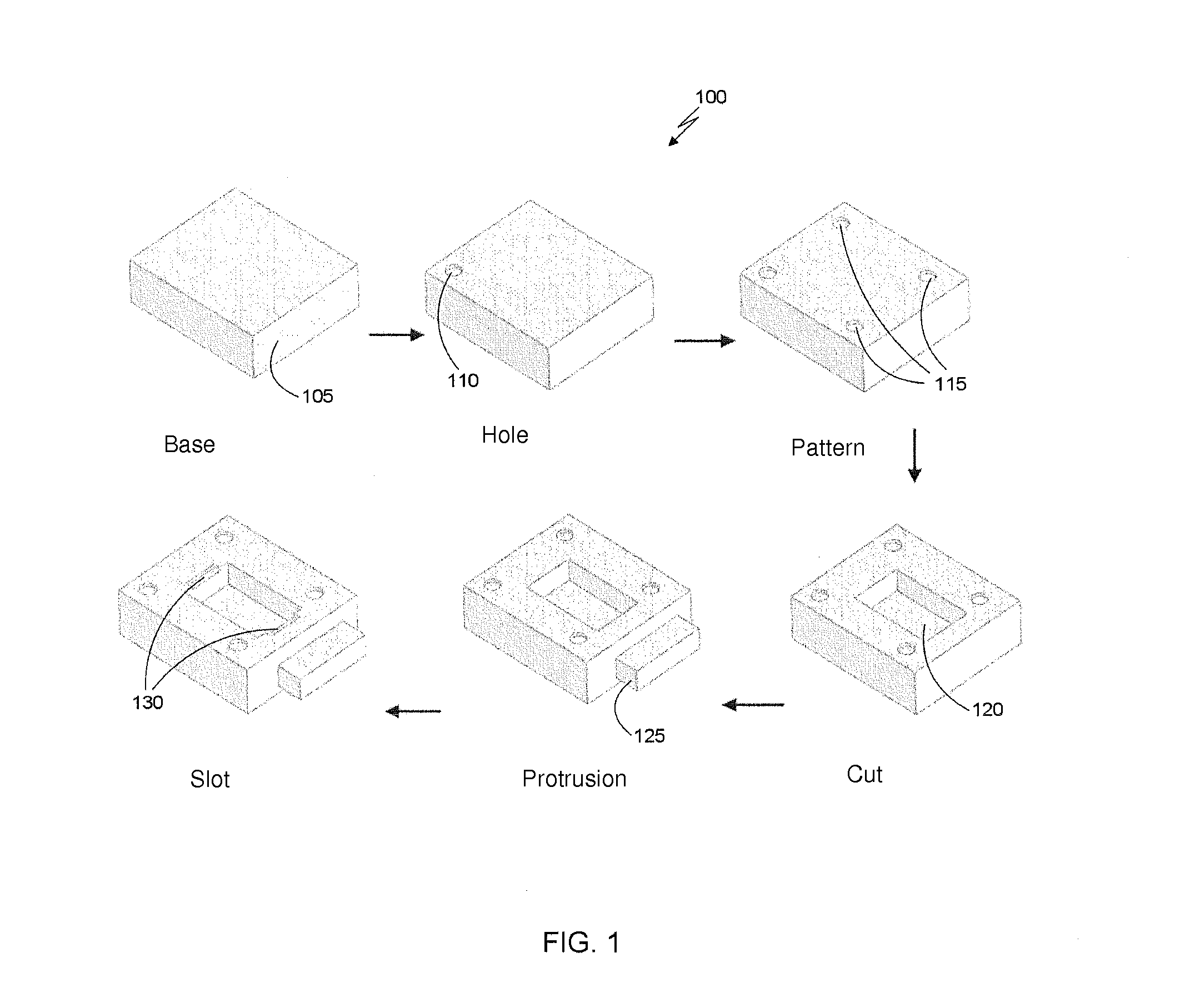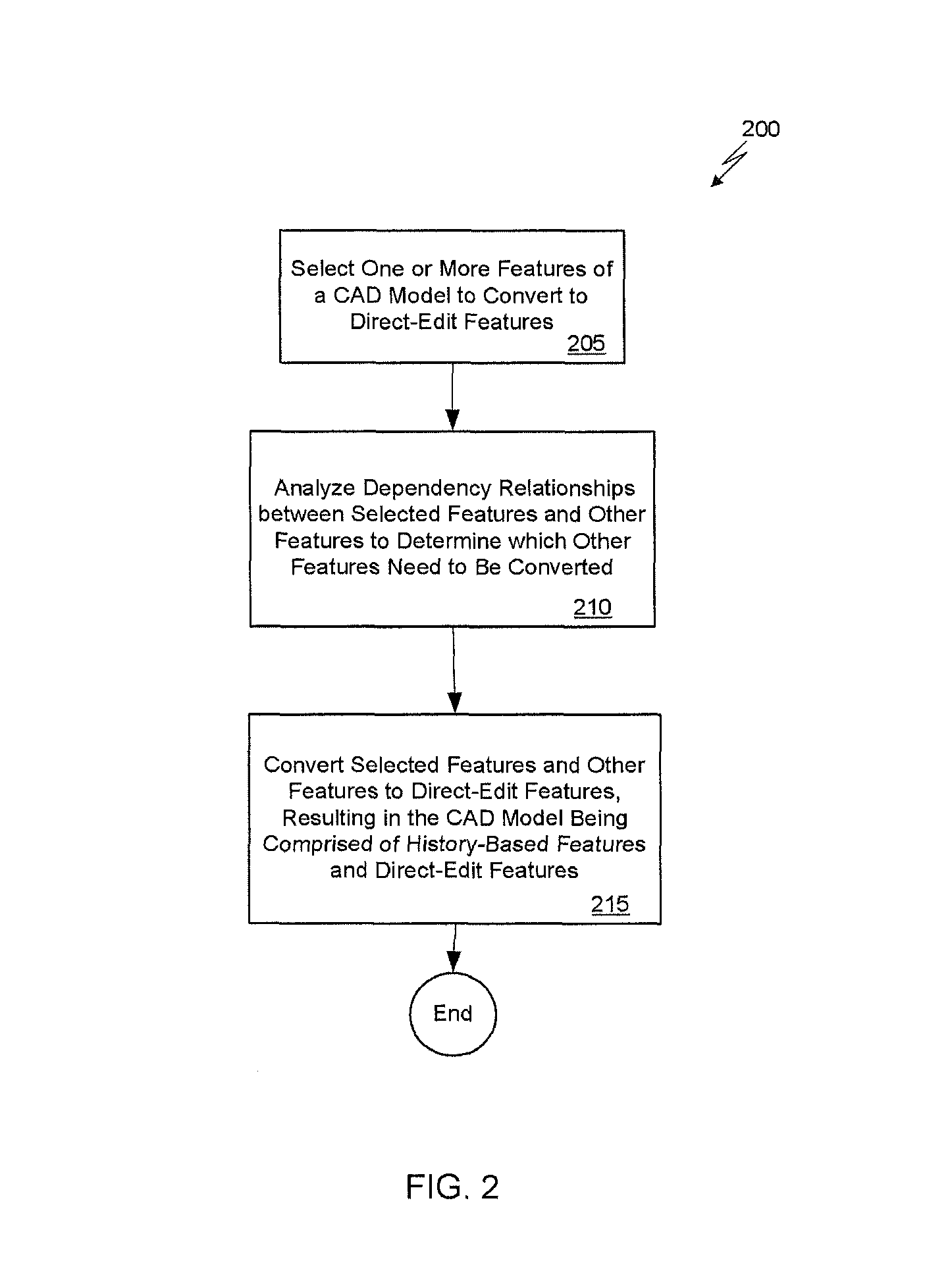Methods and systems for converting select features of a computer-aided design (CAD) model to direct-edit features
a computer-aided design and feature technology, applied in the field of methods and systems for converting select features of a computer-aided design (cad) model to direct-edit features, can solve the problems of inability to find the parameters necessary to make the desired changes, difficult to work with a complex history-based cad model, and lack of parametric modeling. direct-edit modeling, however, lacks the power of parametric modeling, and is available with history-based modelers
- Summary
- Abstract
- Description
- Claims
- Application Information
AI Technical Summary
Benefits of technology
Problems solved by technology
Method used
Image
Examples
Embodiment Construction
[0029]As previously described, editing features in a history-based CAD model is difficult and may require redesigning much of the CAD model to modify one or more features. The solution described herein allows a design engineer to modify existing features in a history-based CAD model without having to re-design many of the features. The solution automatically determines a set of history-based features that need to be replaced by a set of direct-edit features, creating a body of direct-edit features from the determined set of features, and creating a model that contains both the converted direct-edit features and any remaining history-based features. Such a CAD model containing both kinds of features will herein be referred to as a hybrid model. Further, the design engineer can then add new dimensions to the direct-edit features of the hybrid model and can establish a new design intent.
[0030]The inventive concepts described herein not only allow a design engineer to make changes to a ...
PUM
 Login to View More
Login to View More Abstract
Description
Claims
Application Information
 Login to View More
Login to View More - R&D
- Intellectual Property
- Life Sciences
- Materials
- Tech Scout
- Unparalleled Data Quality
- Higher Quality Content
- 60% Fewer Hallucinations
Browse by: Latest US Patents, China's latest patents, Technical Efficacy Thesaurus, Application Domain, Technology Topic, Popular Technical Reports.
© 2025 PatSnap. All rights reserved.Legal|Privacy policy|Modern Slavery Act Transparency Statement|Sitemap|About US| Contact US: help@patsnap.com



